All Season vs. Snow vs. Studded Tires
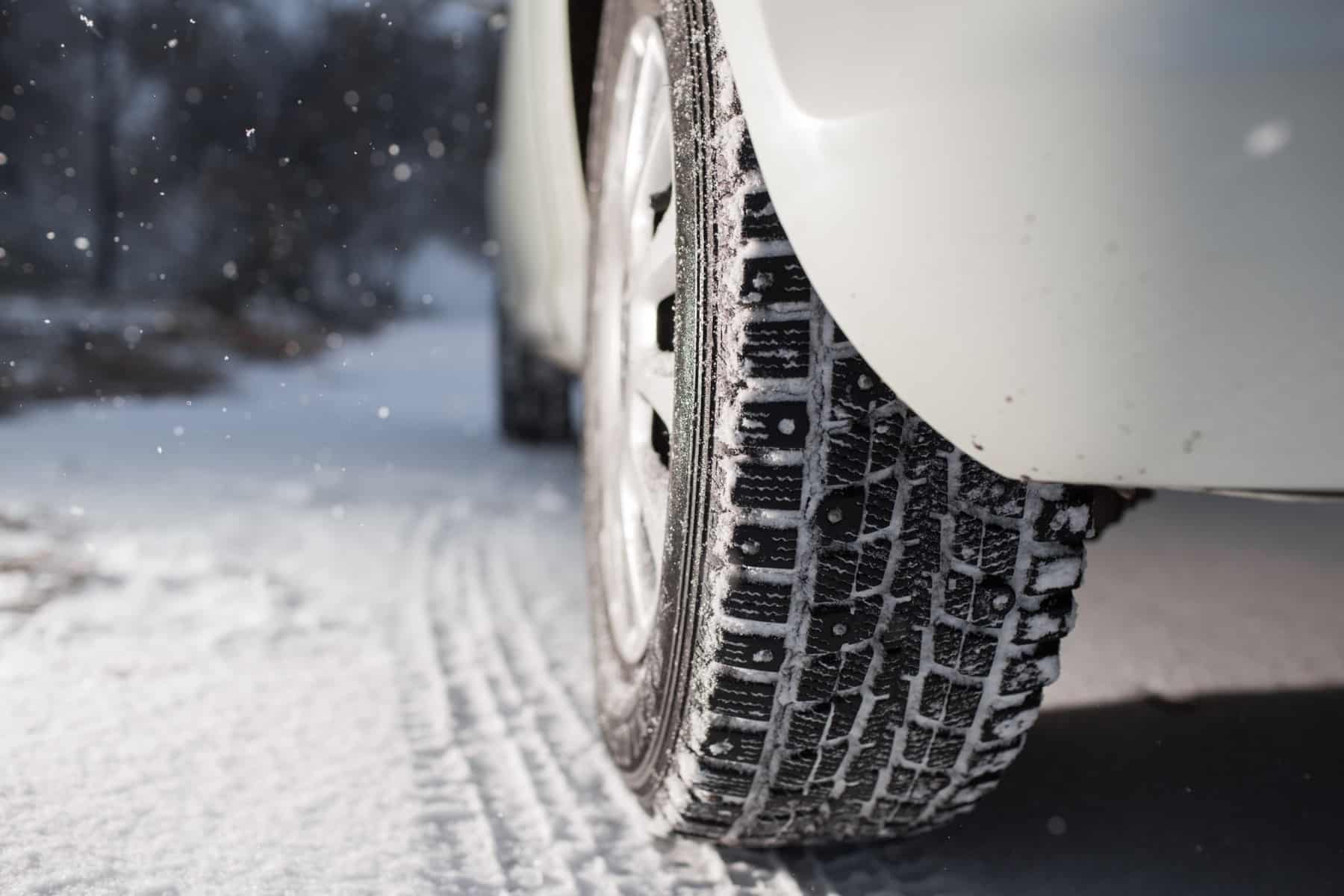
Tire performance impacts more than just how your car feels and sounds when you drive — it’s essential to your overall safety. Having the right tires for your driving conditions ensures you have the maximum amount of grip for acceleration, control, and braking.
When you live in a four-season region like New England, you need to be prepared for all weather conditions, but we know that it can be hard to keep all the different tire types straight. Read on for our look at snow tires vs. all-season, all-weather, and studded winter tires so you can be prepared — no matter the weather.
All-season tires
All-weather tires
Winter/snow tires
Studded winter tires
Tire performance comparison
Tire maintenance tips
Choosing the right set of tires
All-season tires
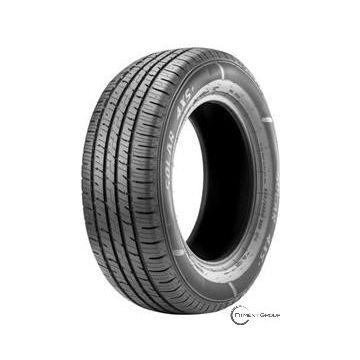
These are the general workhorse of tires. Rain or shine, they’re designed to provide a balance of comfort, long tread life, safety, and performance. Constructed of harder rubber compounds compared to all-weather or winter tires, all-season tires perform well in hot summer weather.
All-season tires feature tread patterns that are meant to reduce road noise and increase drive comfort. While they handle best in dry conditions, their pattern design allows them to function effectively across most types of inclement weather. The tire sidewall will have the Mud+Snow (M+S) marking indicating that it’s suitable for rain, muddy, and even light snow conditions.
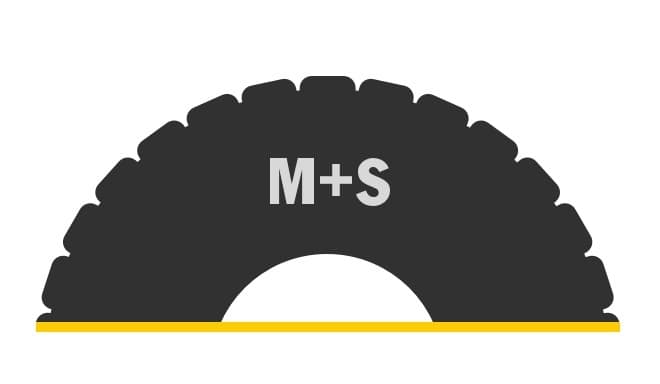
Advantages and limitations of all-season tires: $
- Larger tread blocks offer a quiet ride with good handling in most weather conditions.
- When properly maintained, they will last longer than other tires, as their rubber compounds aren’t as soft as all-weather or winter tires.
- Tend to be less expensive than all-weather or other specialized tires.
- While they perform best in dry conditions, they don’t offer the same high level of grip as high-performance summer tires.
- They aren’t as suited to winter weather conditions as all-weather or snow tires, as their tread channels more easily fill up with slush and snow, impacting performance.
Ideal scenarios for all-season tires:
If you live in a region with a mix of climates they’ll be your tires of choice for spring, summer, and fall. If you’re looking for the most value, a good set of all-season tires will treat you well with their lower price point and longer lifespan.
Looking for the best all-season tires for your vehicle? See our all-season tires buyer’s guide.
All-weather tires
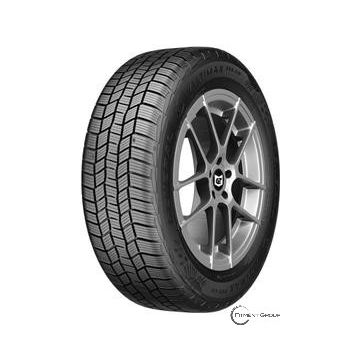
Though technically in the same category as all-season tires, all-weather tires are increasingly seen as their own distinct type due to their greater versatility. While you can think of all-season tires as good “three season” tires, all-weather tires are reliable “four season” tires, as they offer better performance in cold weather and snowy conditions.
The rubber compounds of all-weather tires are softer, enabling them to offer better performance in colder weather. Their tread design has more sipes, which are small slits that push water and slush away from the tread and assist the tire in gripping the snow.
All-weather tires will have both the M+S marking as well as the three peak mountain snowflake (3PMSF) icon on the tire sidewall. This indicates that the tires are designed for a variety of bad weather conditions, from heavy rain to light or moderate levels of snow.
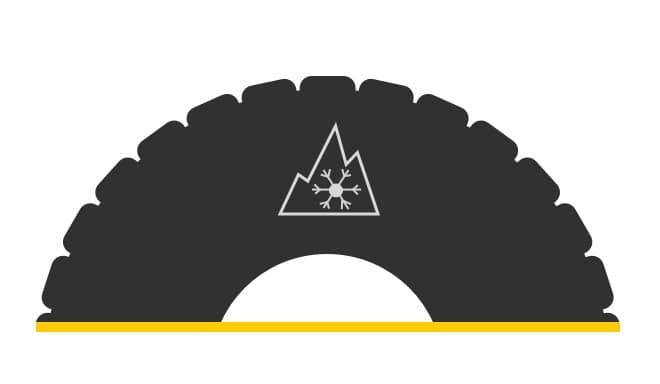
Advantages and limitations of all-weather tires:
- Design allows for good handling in light to moderate winter weather conditions.
- Better in winter conditions than all-season tires, but also can be driven in the summer unlike winter tires.
- Not suitable for hard-packed snow or icy conditions.
- Generally the most expensive tire option.
Ideal scenarios for all-weather tires:
When it comes to all-weather tires vs. all-season tires, all-weathers are the choice if you want a true year-round tire. They’re especially great for city driving, as most New England cities will have plowed and cleared the streets of snow after winter storms, meaning you only need to travel on light snow conditions.
Snow/winter tires
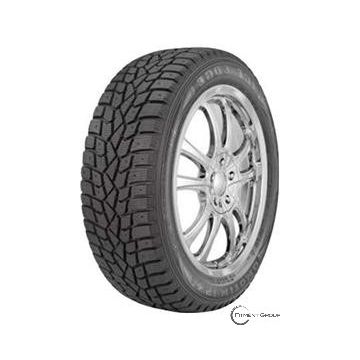
Whether you call them snow tires or winter tires, these are your go-to choice for optimal driving in most winter conditions. Winter tires are specifically designed with softer rubber compounds that will remain flexible in cold weather, allowing you better grip and stopping power when the temperature drops below 40°F.
Winter tire treads provide better grip on icy roads and in deeper snow, with their aggressive tread design pushing away slush and packed snow through the sipes. Like all-weather tires, winter tires will have both the M+S marking and the 3PMSF icon on the tire sidewall.
It’s important to remember that, while winter tires offer superior traction and control in most winter weather conditions, they still have little-to-no grip on hard-packed snow or slick ice. Always be cautious when driving in severe winter weather conditions or on unplowed roads.
Advantages and limitations of winter tires:
- Design allows for good handling in all but the worst winter weather conditions.
- Better in winter conditions than both all-season tires and all-weather tires.
- Generally a less expensive winter tire option than all-weather tires.
- Has less grip on dry roads than all-season tires and is a louder drive.
- Not recommended for driving in temperatures over 40°F. as softer rubber compounds means the tire treads will wear out sooner.
- Has limited-to-no grip or stopping power on ice or hard-packed snow.
Ideal scenarios for winter tires:
If you’re driving on a regular basis during the winter, then you should have a set of winter tires. In snowy conditions, the competition between winter tires vs. all-season tires is no contest — winter tires offer better grip, stopping power, and control. They perform best in light-to-moderate snow, as well as wet or slushy conditions. They’re perfect for city driving in the winter and will be suitable for most country roads.
Studded winter tires
Studded winter tires are exactly what they sound like — winter tires that contain studs built into the tread of the tires. These studs are small rivets that act similarly to cleats on a shoe, allowing the tire to dig into snow or chip into ice. Tire studs are often metal, though they can be rubber or hard plastic.
Studded winter tires have the same rubber compounds and tread design as winter tires, allowing them greater flexibility in temperatures below 40°F and the ability to push away snow and slush from the treads. There are also studdable winter tires, which are winter tires with pre-installed holes within the tread for studs to be added at a later date.
Studded and studdable winter tires will have both the M+S marking and the 3PMSF icon on the tire sidewall.
Advantages and limitations of studded winter tires:
- The only tire that can provide handling and stopping power on hard-packed snow and ice.
- Better in winter conditions than both all-season tires and all-weather tires.
- Studdable tires are generally a less expensive winter tire option than all-weather tires.
- Has less grip on dry roads than all-season tires and is a louder drive.
- Not recommended for driving in temperatures over 40°F. as softer rubber compounds means the tire treads will wear out sooner.
- Buying studded tires or installing studs will cost more than a regular set of winter tires.
- Studs will increase the wear on road surfaces, which is why they are prohibited in some states after certain dates.
Ideal scenarios for studded winter tires:
Studded winter tires are highly specialized and meant for driving in the worst winter weather conditions, offering even more control than regular winter tires. They are the only type of tire that can provide traction on ice and hard-packed snow. They’re meant more for country and backroad driving, where plowing and road clearing is limited.
Looking for more information on regular snow tires vs. studded winter tires for your vehicle? See our in-depth comparison guide.
Performance Comparison: All-Season vs. All-Weather vs. Winter tires vs. Studded
Rating guide: X – Good XX – Better XXX – Best
| All-season | All-weather | Snow/Winter | Studded | |
| Performance on dry roads | XXX | XXX | X | X |
| Handling on wet roads | XXX | XXX | XX | XX |
| Traction on light snow and rough ice | X | XX | XXX | XXX |
| Traction on packed snow and wet ice | X | XX | XXX | |
| Noise and comfort | XXX | XX | X | X |
| Longevity and wear | XXX
around 60k miles |
XXX
around 60k miles |
XX
around 40k miles |
XX
around 40k miles
|
| Optimum performance conditions | Warm, dry, or wet conditions | Dry and wet conditions, slush and light snow | Cold, snowy conditions | Unplowed roads with heavy snow and ice |
| Pricing, starting at* | $79.99 | $137.46 | $112.99 | $112.99 |
*These are estimated starting prices. All tires will vary in price depending on the manufacturer, design, and quality of the product. For specific prices, reach out and request a quote for tires appropriate for the make and model of your vehicle.
Tire Maintenance Tips
No matter your type of tire, whether it’s a winter tire vs. an all-season or all-weather tire, they will last longer and provide you with greater value when properly maintained and cared for.
Here’s our top tire maintenance tips:
- Always change out your tires at the start and end of winter. If you have two sets of tires for different seasons, always change out your tires once the temperature is regularly above or below 40°F.
- All-season tires harden in cold weather, providing less grip and stopping power.
- The more you drive winter or studded tires in above 40-degree temperatures, the faster the rubber will wear out.
- Give your tires a regular review and spot check. Take care to inspect your tires for damage and excessive wear, especially before installing a new set at the start of the season. That way you can safely repair the tire if needed or replace them if necessary.
- Always install a full set of tires. However, if price is an issue and you can only mount a set of two tires, then mount them on the rear even if your vehicle is front-wheel drive. This keeps the back end more in control and helps to prevent fishtailing. If you have an all-wheel drive vehicle then you must change all four tires at the same time, no exceptions.
- Only install studs on studdable tires. Attempting to install studs on non-studdable tires will just damage the tire. If you need studded winter tires, then either purchase pre-studded tires or a set of studdable winter tires.
- Rotate your tires to increase longevity. This especially pertains to your winter and studdable winter tires, as they have softer rubber compounds, which means their treads will wear out faster than all-season tires. Regularly rotate them during the winter months to ensure they last as long as possible.
- Check your tire pressure regularly, especially during temperature changes. Overinflated and underinflated tires will wear out faster. Colder weather reduces air pressure and deflates your tires, with every 10-degree drop causing a loss of one pound of psi. Your tires will regain pressure as the day warms, but be sure to reinflate your tires to the recommended psi levels if you’re expecting a streak of cold weather.
VIP Auto Can Help You Choose the Right Set of Tires
Ensure that your vehicle is always performing at its best with the right set of tires for the job. Our certified automotive professionals can inspect your tires for free to ensure they’re properly inflated, balanced, and aligned. They can also help you find the perfect set of tires for any New England weather condition — sun, rain, or snow.
Get ready for winter — browse and select the winter tires for your needs.
Visit us at one of over 65 locations throughout the Northeast. Walk-ins Welcome!
Schedule Service Get a Free Quote